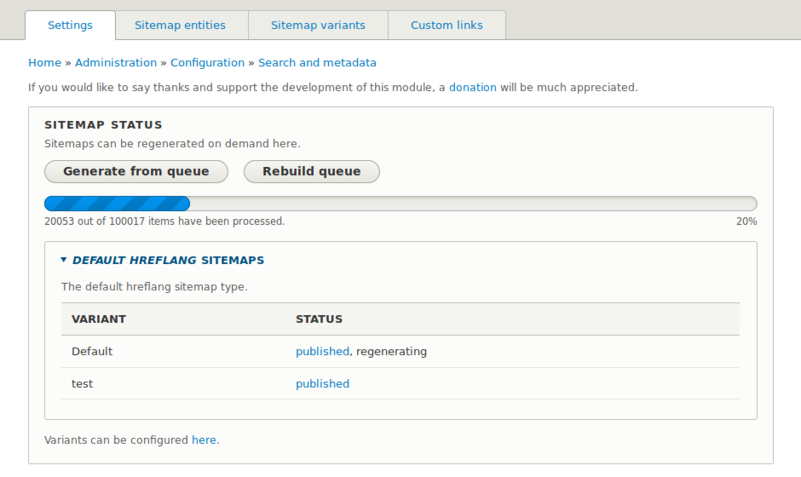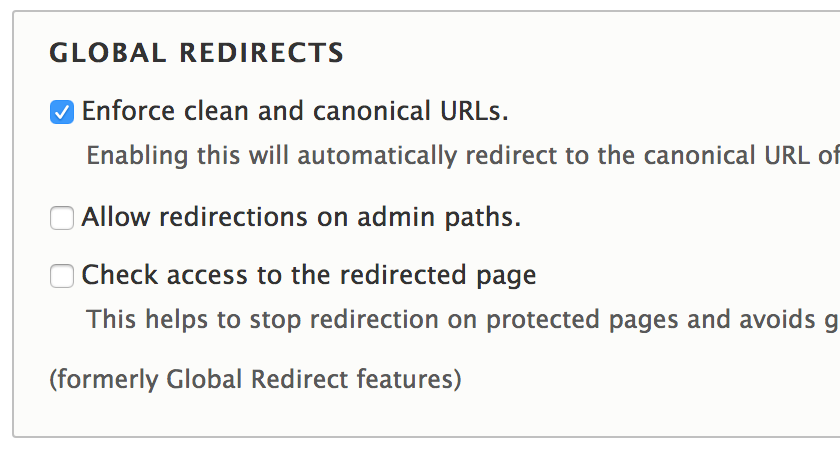13 Things that Will Improve Your Drupal Site’s Ranking

1. Check that all web pages have unique titles
Titles are the first element that any user will see –whether they come directly to your site, find it on a search engine, or see it shared on social media. Not only do good page titles help customers who are already on your site, but they help with social sharing, and picking your site out of search engine results.
All of your pages should be easily identifiable to the end user. Not only should they have unique titles, but they should also have meaningful titles. Having multiple pages with the same titles (like “Get in touch”, “Contact us” and “Make a booking”) will simply confuse your end users and search engine crawlers.
From an SEO perspective, page titles are among the most important types of data you can fill, because they help search engines understand what each of your web pages is about.
Writing good titles is extremely important, and having keywords in your title that match a user’s search greatly improves the chances of them clicking on your page.
You can set up unique page titles much easier if you install the Drupal Page Title module.
2. Check if XML Sitemap and Google News Sitemap are configured properly
The XML Sitemap module for Drupal creates a robot-friendly map of your site that Google and other search engines can crawl to categorize your website. You should configure XML Sitemap early in your site build for the best effect, but you can also alter the settings later on at admin/config/search/XML if needed.
You can view your sitemap from http://yoursite.com/sitemap.xml (just replace “yoursite.com” with your own domain).
Google News Sitemap offers a similar but different service that creates a Google-specific map for ranking under their “News” section and to appear as news items on their main SERP pages. These two modules work nicely side by side to make your site easy for search engines to crawl and index.

Please note that if your site contains accelerated mobile pages (AMPs), there is no need to create sitemaps for them. The rel=amphtml link is enough for Google to pick up on AMP versions, which means you can easily gain traffic from Top Stories carousels and mobile search.
3. Check if Redirect module is enabled and configured
Redirect is a handy module for making sure users always make it to your site. It uses case-insensitive matching to help catch broken links with redirects and tracks how often users are hitting those redirects.
You can use redirects to capture any broken links, set up promotional links, or simply capture typos users are entering when trying to access your site.

4. Check if Global Redirect module is enabled and configured
If you’re using Drupal 8 you can skip this one because the functionality has been rolled into the Redirect module. Otherwise, install Global Redirect to work in tandem with Redirect to catch any broken links.
Global Redirect will test all links with and without a trailing slash, ensure links are case-insensitive, and if a link is truly broken, it will return a user to your home page rather than a 404 page that decreases the position of your site in SERPs.

5. Check that .htaccess redirects to your site
Some users attempting to visit your site will navigate to www.yoursite.com, while others will simply type yoursite.com. By setting up your site to handle either request using an .htaccess redirect, you can be sure you won’t miss any visitors.
6. Check that the homepage title includes a descriptive headline, logo and primary image
Design a homepage title that contains a descriptive headline as well as a slogan, to represent who you are as a business. This is usually the first impression you give off to visitors the moment they land on your site or catch your entry on a search engine.
This is a good opportunity to load your website up with SEO-friendly keywords, but don’t go overboard and sacrifice your image for it – keyword stuffing may not only decrease the trust index of your site but also its conversion rates.
7. Ensure that your meta tags are filled with descriptive information
SEO-optimized meta tags remains to be one of the top on-page ranking factors. You can think of these as expanded page headers –short-form descriptions of your website that give users and search engines a clearer idea of what to expect out of a webpage.
Make sure to install the Metatag module on your site to have an easy, user-friendly interface for updating metadata. With the module installed you can easily populate meta data with keywords, page descriptions, and more.
The Metatag module will also give you extra control over how your site appears when shared on Twitter or Facebook.
8. Check that OG tags are filled correctly and with descriptive information.
OG tags are meta tags specifically designed to ensure your site communicates nicely with Facebook. By setting these tags correctly you will be able to control exactly how your site appears on Facebook, including what images and what taglines are used.
9. Check if your site information displays well when shared on Facebook and Twitter
After configuring the Metatag module and OG tags, pop over to Facebook and make sure that your site shares the way you would like it to. It’s important to test this out now before users start sharing your site.
Similarly, try tweeting a couple of your pages to see how well your Twitter Cards come through. If you don’t want to show your site to your audience until you are sure it’s set up properly, you can check Twitter Cards using the Card Validator.
10. Check if your path alias patterns are meaningful
By default, Drupal will set your URLs to node/123 – while this works great for the database backend, it doesn’t work well for your end users, or for search engines.
You can use the Pathauto module to create rules and patterns for your URLs that will significantly cut down on your maintenance times and simplify your site navigation.
11. Check if Google Analytics is enabled and configured
While having Google Analytics configured won’t improve your SEO, it will give you all the data you need to understand where your users are coming from and how they behave once they hit your site.
Installing the Google Analytics module makes setting up and configuring Google Analytics a breeze.
12. Check if Site Verification is enabled and configured
Having your site verified will make it easier for search engines crawlers to reward you with a higher rank, and for Google to allow you to access private search data. With site verification, you will receive better data and better search engine rankings for just a few minutes work.
The Site Verification module makes it easy to prove to search engines that your site is truly your own.
13. Check if Search 404 module is enabled and configured
The Search 404 module is a saving grace for reducing your bounce rate and SERP rankings, as well as for improving your overall user experience. Instead of your users finding an ‘Error: Page not Found” in place of the content they were hoping for, they will be offered a search of your site based on the URL string.
For example, if www.yoursite.com/great-seo-tips doesn’t exist, use this module will automatically search your site for “Great SEO tips” and show visitors the results.
While SEO may seem like a tricky subject to wrap your head around, the basics are easy with the right modules and guidance, and Drupal is a great content management system for building search engine optimized websites.